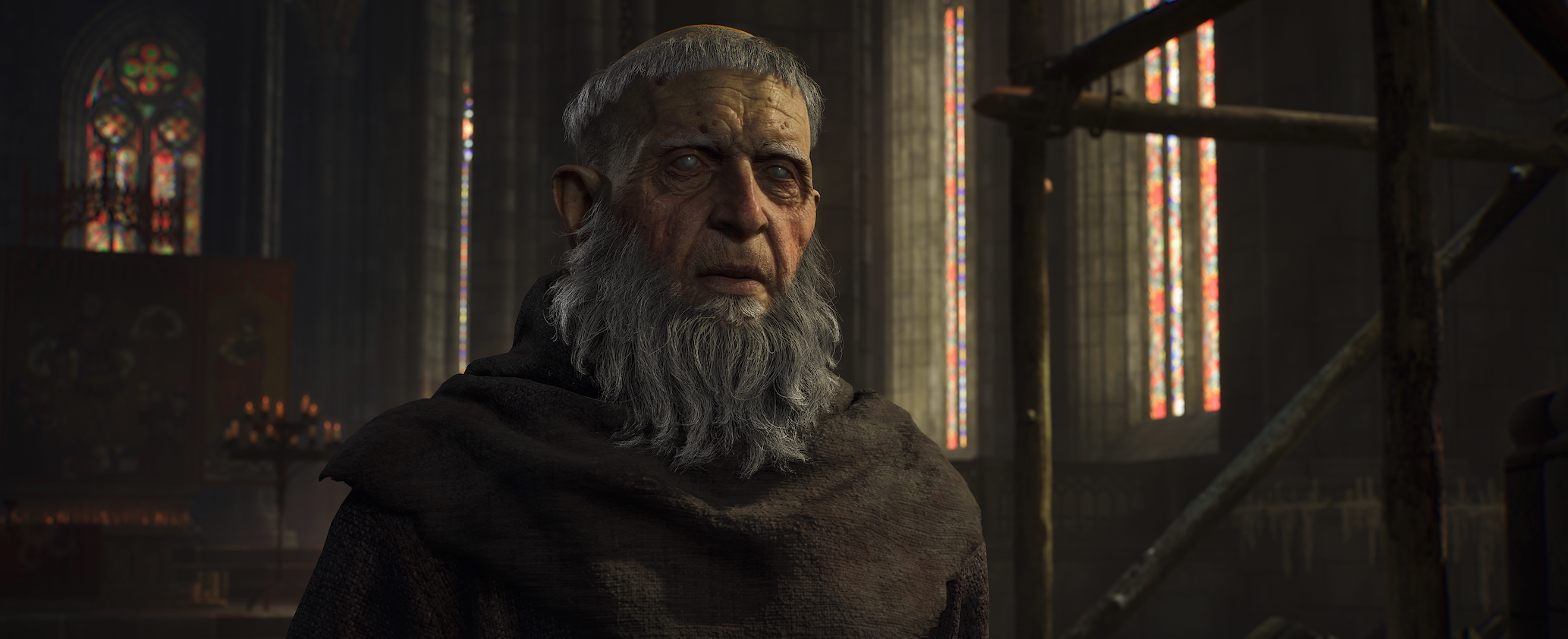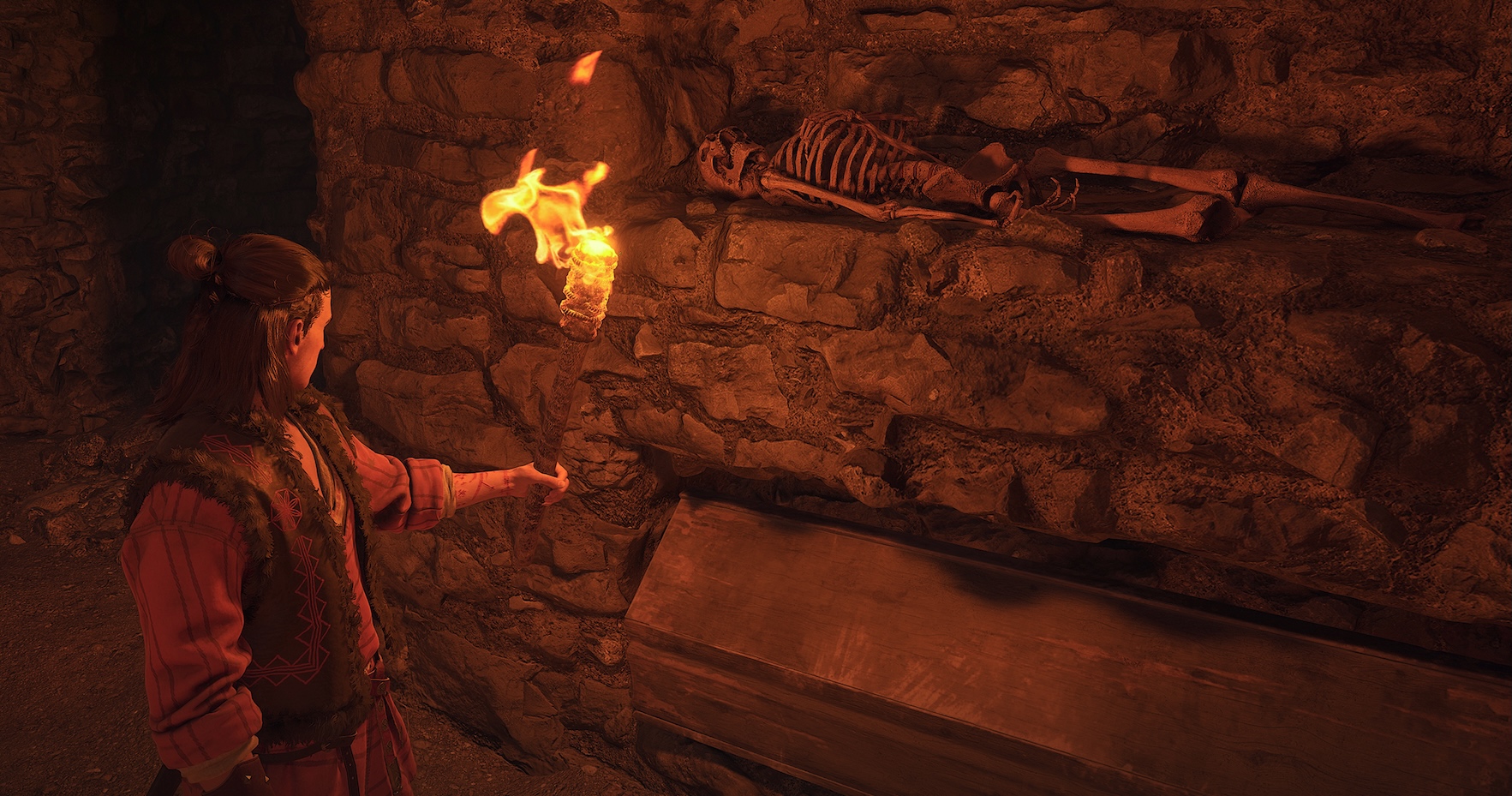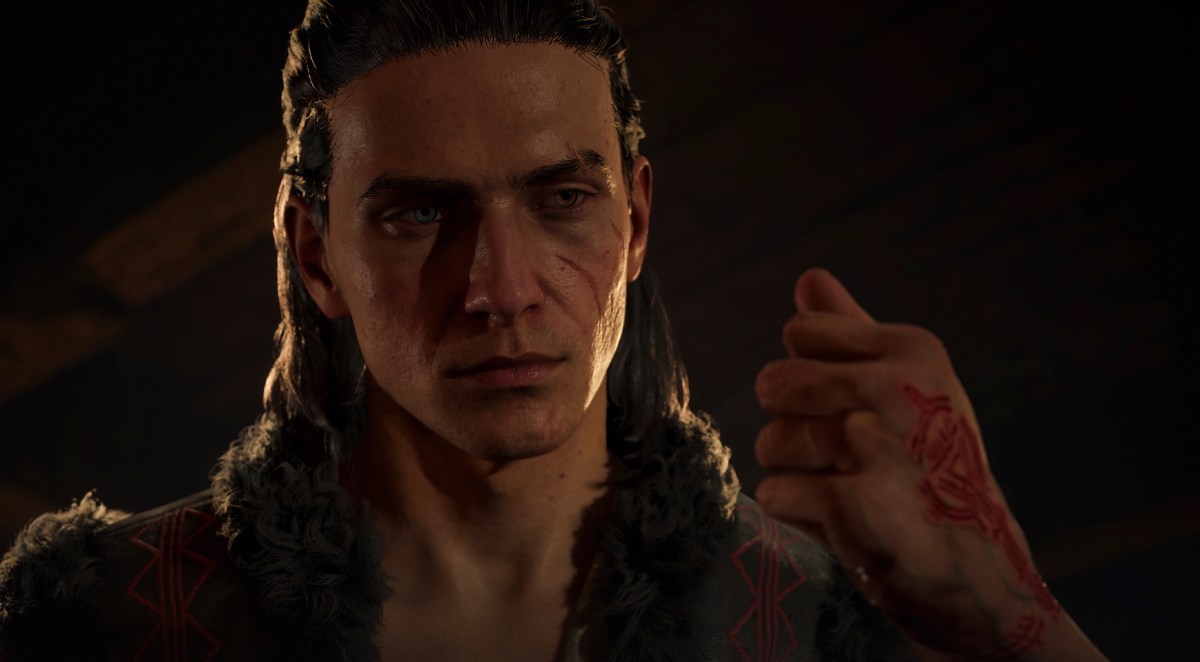The Blood of Dawnwalker toes a very distinct line. As protagonist Coen, you are the titular ‘dawnwalker’ – a human by day, vampire by night, who must chart both worlds to save his family and bring peace to his city. In an early preview shared with ScreenHub, the nature of this duality was well on show, illuminating just how The Blood of Dawnwalker will encompass light and dark in a sprawling, choice-based tale.
What’s unique about this upcoming RPG is that time is a currency that is tracked and monitored. As you roam a vast open world, you’ll come across all sorts of folks, many with quests to offer. Some of those quests come with a warning – a little hourglass, followed by a number.
The Blood of Dawnwalker features a unique time system
You’ll learn that if you take on these quests, time in the world of Dawnwalker will advance incrementally, with days being added to a set timeline. Coen only has a certain number of days to save his family (for reasons that were not detailed in this preview) so you’ll need to carefully monitor which quests you take on, and how far the timeline advances.
It’s a novel twist, and one that adds weight to each decision. If you take on too many side quests, the rope you have for the main quest begins to burn. In the game’s preview, one developer confirmed this clock-ticking mechanic is not designed to put pressure on players, but more to ground the game’s primary tale, and ensure the stakes are understood. (Just a little vampire pun there, for you.)

I particularly like that balance, as someone who frequently gets distracted side quests when perhaps they shouldn’t. There’s often debate around that push-pull in video games – that perhaps players shouldn’t be left to wander as far as they like, given the many threats that infringe on game worlds, and the perceived urgency of their defeat.
The Blood of Dawnwalker sidesteps this argument very well, providing bounds for players to travel within, alongside the understanding that every choice, and every new quest, carries consequences – and that wasting time should be avoided.
The difference between day and night in The Blood of Dawnwalker
There’s another twist in this setup, and that’s in how the game’s day-night cycle works. Coen is a unique half-vampire who only exists as a vampire at night. During the day, he’s free to go about his human business, investigating leads and taking on quests under zero suspicion. In either form, you can take on quests and get entirely different results.
A Monk and a Saint, one of the core quests of The Blood of Dawnwalker, was tackled both ways in the gameplay preview. In the first circumstance, Coen took on the quest at night, and thus had to scramble across rooftops and investigate documents laying around in the eaves of the church to uncover tell of a mysterious crypt which housed an enchanted (or possibly cursed) blade. Looking over bannisters, he hears strange sermons, and weaving through shadow, he must slowly and stealthily make his way to the crypt below.

By day, it’s an entirely different story. The crypt can be accessed by visiting the nearby church and conversing with an array of folks, each with their own part of the puzzle. Coen speaks with a monk, who provides a quest to solve, before allowing access to a library which houses required clues. He bribes a resident of the local asylum for his next steps, eventually stumbling into the kill den of a twisted vampire.
There, he finds what he needs (after some bloody swings of his swords, and a resurrection of the dead using hex magic), and discovers the final pieces to unlock the crypt and head below.
In both circumstances, Coen was able to make his way into the crypt, to find the mysterious secret lying within, but two separate approaches used different skills, revealed different stories, and took different amounts of time. With that split, you always have to wonder: which path should you take in The Blood of Dawnwalker? Is one better than the one? Will one take less time, giving you more freedom to explore, later?
Read: The Blood of Dawnwalker pairs Vampyr with The Witcher
I am entirely compelled by that duality, and the idea of needing to choose wisely with each new dawn. It likely means multiple playthroughs will be needed – or at the very least, that the game will inspire discussion about the best ways to approach new quests, and when or where to really spread your wings. One player’s path might differ completely from another.
For now, the excitement around what The Blood of Dawnwalker offers will need to be tempered. Its bright-eyed vampire fantasy is shaping up to be very eye-catching indeed, but with no firm release date beyond a 2026 window, it’s best to stay patient for more news.
We’ll certainly be watching this game closely as it heads to launch.





